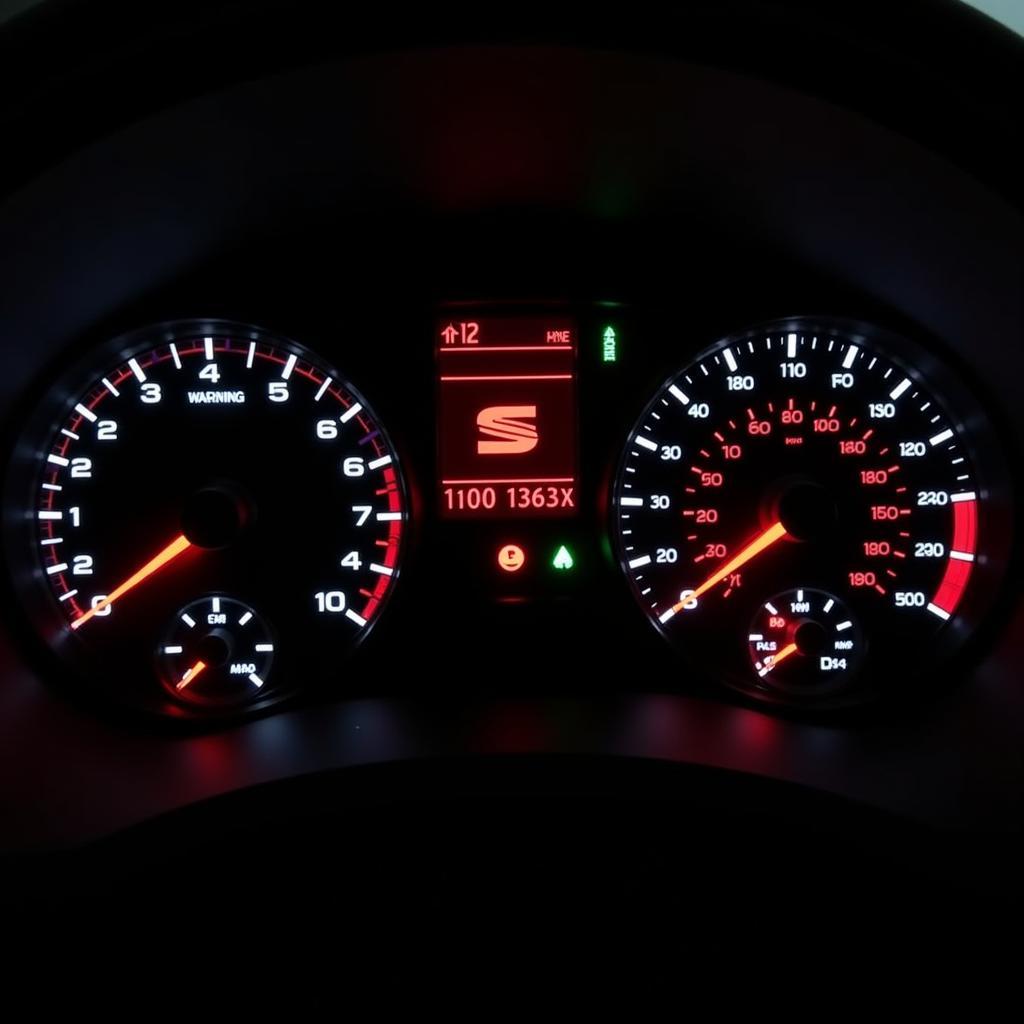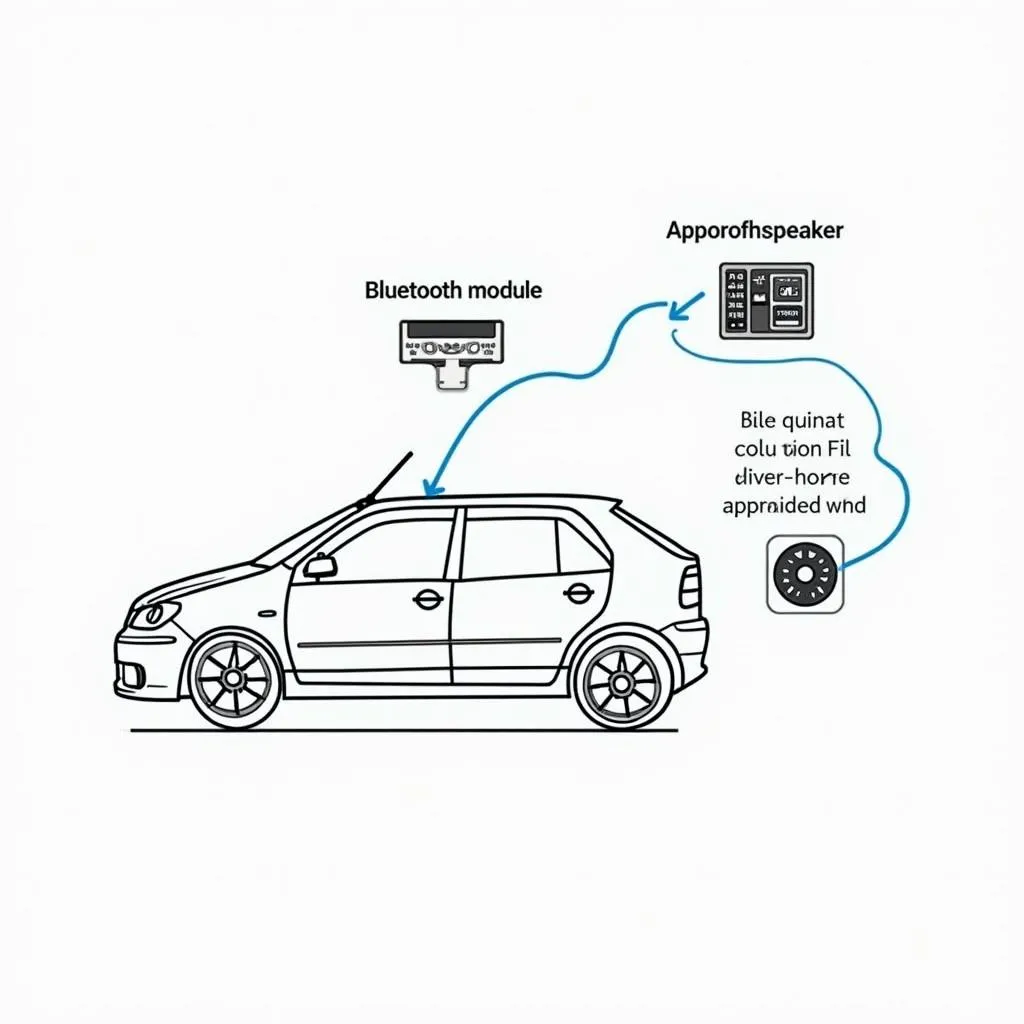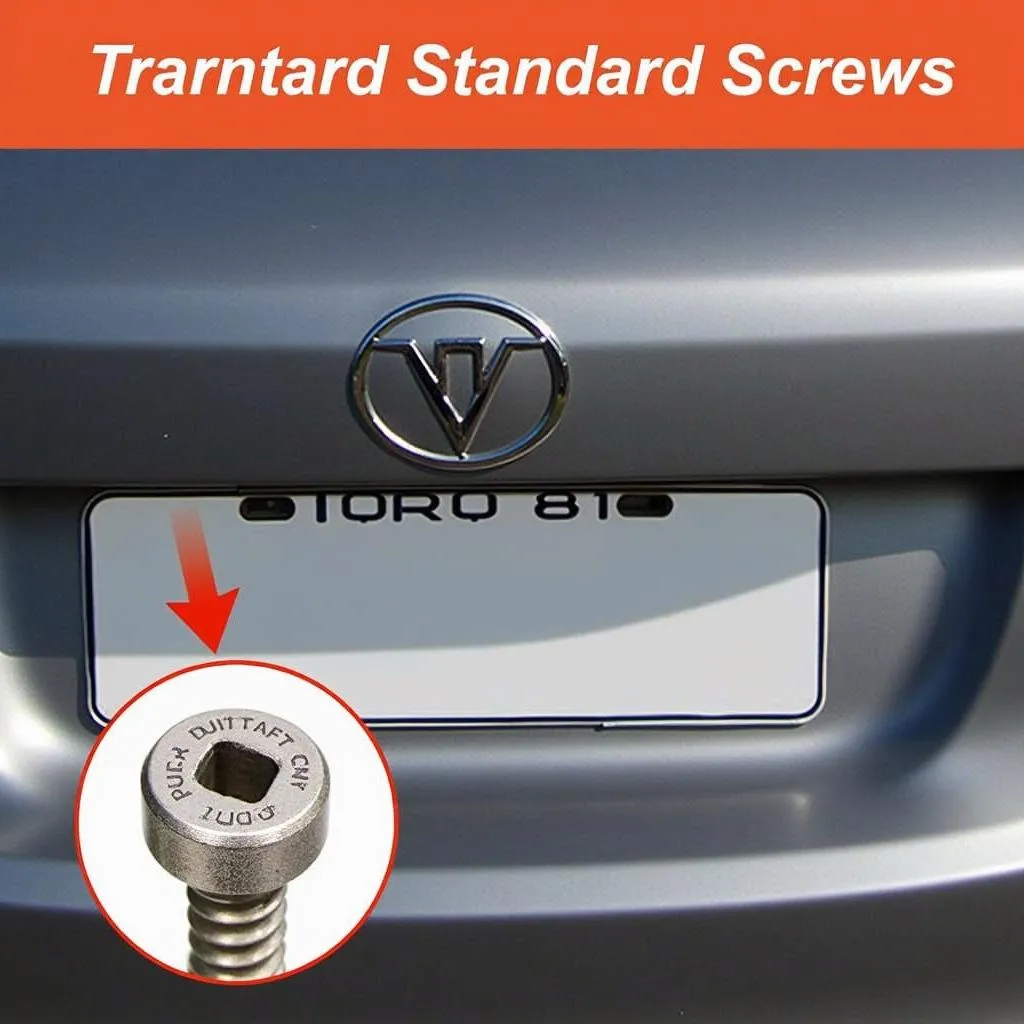The Seat Ibiza dashboard features a variety of warning lights designed to alert you to potential issues with your vehicle. Understanding the meaning of these warning lights can help you address problems promptly and potentially avoid costly repairs. This guide will delve into the common Seat Ibiza warning lights, their meanings, and what actions you should take when they illuminate.
Common Seat Ibiza Warning Lights and Their Meanings
 Seat Ibiza Dashboard Warning Lights
Seat Ibiza Dashboard Warning Lights
Engine Warning Light
The engine warning light, often depicted as a yellow outline of an engine block, is a general indicator of an issue with your Seat Ibiza’s engine management system. This light can be triggered by a range of problems, from minor sensor malfunctions to more serious issues like misfires or a faulty catalytic converter.
What to do: If the engine warning light illuminates, it’s crucial not to ignore it. However, the severity of the issue can vary. If the light is steady, you can likely continue driving cautiously to a safe location and contact a mechanic for diagnosis. However, if the light is flashing, it indicates a more severe problem, and you should pull over immediately and seek professional assistance.
Electronic Power Control (EPC) Warning Light
The EPC warning light, typically represented by a yellow circle with an exclamation mark and the letters “EPC,” signals a problem with your Seat Ibiza’s electronic throttle control system. This system manages the engine’s throttle position based on driver input and other factors.
What to do: If the EPC light comes on, it’s important to exercise caution as your car may enter “limp mode,” limiting engine power to prevent further damage. You should avoid accelerating harshly and seek professional diagnosis and repair as soon as possible.
Anti-lock Braking System (ABS) Warning Light
The ABS warning light, typically depicted as a yellow circle with the letters “ABS” inside, indicates a problem with your Seat Ibiza’s Anti-lock Braking System. The ABS prevents your wheels from locking up during hard braking, enhancing vehicle stability and control.
What to do: If this light illuminates, it means your ABS system is deactivated, but your regular brakes should still function. However, it’s important to have the issue diagnosed and repaired by a qualified mechanic to ensure your safety on the road.
Tire Pressure Monitoring System (TPMS) Warning Light
The TPMS warning light, usually represented by an exclamation mark within a horseshoe-shaped symbol, alerts you to a potential issue with your tire pressure. This system monitors the air pressure in your tires and warns you if any of them are significantly underinflated.
What to do: When this light comes on, it’s essential to check the tire pressure of all four tires as soon as possible and inflate them to the recommended levels specified in your Seat Ibiza’s owner’s manual. If the light remains illuminated after inflating your tires, it could indicate a problem with the TPMS sensor itself.
Understanding Different Warning Light Colors
Seat Ibiza warning lights utilize a color-coding system to indicate the urgency of the issue:
- Red Warning Lights: These lights signify a serious issue that requires immediate attention. Ignoring red warning lights can lead to severe damage to your vehicle or even compromise your safety.
- Yellow/Amber Warning Lights: These lights indicate a less critical issue that requires attention but may not necessitate immediate action. However, it’s crucial to have yellow/amber warning lights diagnosed and addressed promptly to prevent further problems.
What to Do When a Warning Light Illuminates
- Consult Your Owner’s Manual: Your Seat Ibiza’s owner’s manual is your go-to resource for understanding the meaning of specific warning lights and recommended actions.
- Assess the Situation: Determine if the warning light is red or yellow, flashing or steady. This will give you an idea of the urgency of the issue.
- Take Appropriate Action:
- Red Warning Light or Flashing Light: Pull over in a safe location as soon as possible and contact a qualified mechanic or roadside assistance.
- Yellow/Amber Warning Light (Steady): Continue driving cautiously to a safe location and schedule an appointment with a mechanic for diagnosis and repair.
- Avoid Ignoring Warning Lights: Prolonging the diagnosis and repair of even seemingly minor issues can lead to more significant problems and costly repairs down the line.
Expert Insight
“Modern vehicles like the Seat Ibiza rely heavily on complex electronic systems. While these systems enhance performance and safety, they can also trigger warning lights even for minor issues. It’s crucial not to panic but to be proactive in addressing these warnings promptly.” – John Miller, Senior Automotive Diagnostic Technician.
Conclusion
Being familiar with the meaning of your Seat Ibiza warning lights is crucial for responsible vehicle ownership. By understanding these warnings and taking appropriate action, you can ensure the longevity and reliability of your car while prioritizing your safety on the road. Remember, if you’re ever unsure about the meaning of a specific warning light or the appropriate course of action, always consult your owner’s manual or contact a qualified mechanic for professional guidance.
Frequently Asked Questions (FAQs)
1. Can I reset the warning lights myself?
While some warning lights may turn off automatically after addressing the underlying issue, it’s generally not recommended to attempt resetting them yourself. Professional diagnostic equipment is often required to identify and clear the root cause of the problem.
2. How often should I have my Seat Ibiza serviced?
Following the recommended service intervals outlined in your owner’s manual is crucial for maintaining your vehicle’s health and preventing potential issues. Regular servicing includes essential checks, fluid top-ups, and component inspections that can help detect and address minor problems before they escalate.
3. What should I do if a warning light comes on while driving?
If a red warning light illuminates or a warning light is flashing, pull over in a safe location as soon as possible and seek professional assistance. For steady yellow/amber warning lights, continue driving cautiously to a safe location and schedule an appointment with a mechanic for diagnosis and repair.
4. Is it safe to drive with the engine warning light on?
While you may be able to drive a short distance with a steady engine warning light, it’s crucial not to ignore it. The severity of the underlying issue can vary, and driving with an unresolved engine problem can lead to further damage or even compromise your safety.
5. Can extreme temperatures affect the warning lights?
Extreme temperatures, both hot and cold, can sometimes cause temporary sensor glitches that may trigger warning lights. However, it’s always best to err on the side of caution and have any illuminated warning lights diagnosed by a qualified mechanic to rule out potential problems.


